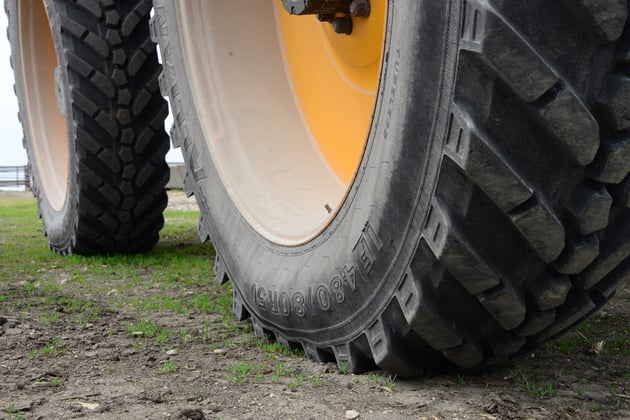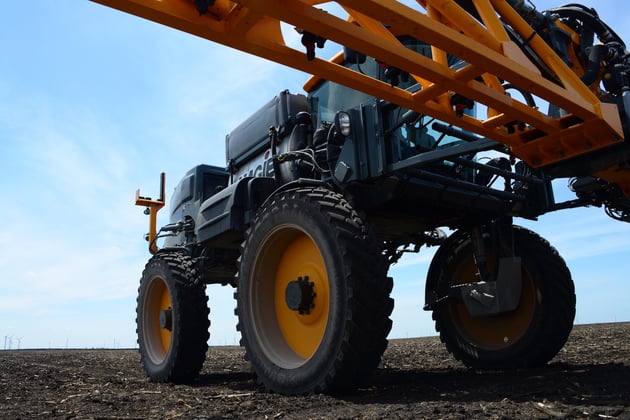Tips to Ensure Properly Inflated Farm Tires
I’ve spent the past couple of months in the field inspecting Alliance tires across the Midwest as farmers have rushed to plant this year’s crops between spells of rain. It’s great to see corn and soybeans emerging across the Corn Belt, especially in fields that aren’t rutted by traffic.
We’re seeing great results from our increased flexion and very high flexion (IF/VF) tires on tractors and sprayers. Farmers and applicators like to know that IF tires can carry 20 percent more load at the same inflation pressure as a standard radial and VF can carry 40 percent more, or that these new, high-tech tires can carry the same load as a standard radial with 20 to 40 percent less inflation pressure. But even knowing that, I’m seeing a lot of overinflated tires. That tells me that those farmers and custom sprayers could be getting even more performance out of their IF/VF tires.
All Alliance IF/VF tires are steel-belted, which creates a broad, flat, rectangular footprint. That footprint evenly distributes the weight of the machine on the soil, reducing compaction, and rutting. Putting the full footprint on the ground also transmits power more efficiently, so you get more performance from your tractor or sprayer. We’ve engineered those tires to enhance the effectiveness of your machinery. Proper inflation pressure is an important part of making the most of that engineering.

Here are a few tips as we wrap up planting and start getting into postemergence spraying and sidedressing:
• Know your load. Proper inflation pressure takes into account load and speed. You need to know how much your tractor or sprayer weighs—loaded—to set the proper inflation pressure. Once you know that (don’t forget to account for the fact that UAN solution weighs 11 pounds per gallon and water weighs 8 pounds), check your tire’s inflation pressure chart for the right target. Or call your tire dealer for advice on the proper pressure.
• Run your tire on dry gravel and look at the tread. Does the dust extend all the way to the shoulders of the tire, or is it concentrated toward the middle of the tread? That will show you where you’re wearing your tread. The dust should be visible all the way from edge to edge—if you see a band of dust down the center of the tread, you’re overinflated.
• Look at the edge of the tire on the ground. When the machine is fully loaded, are the shoulders of the tire’s lugs resting on the surface, or are they lifted off (even a little)? If they’re lifted off the road or lot, you’re overinflated and you’re not putting the full footprint on the road or soil.
Our IF/VF tires are a powerful tool to help you make the most of your machinery, protect your soil and get more farming done every day. Check our website, consult your tire’s inflation chart, or call your tire dealer to find the right inflation pressure for your fully loaded machine. Then make sure you’re on target. A couple of minutes spent checking your inflation pressure and making sure you’re not overinflated will help you get better, longer performance from your tire investment—and protect your fields from soil compaction.
Good luck getting the last of the 2016 crops planted and have a great season.


